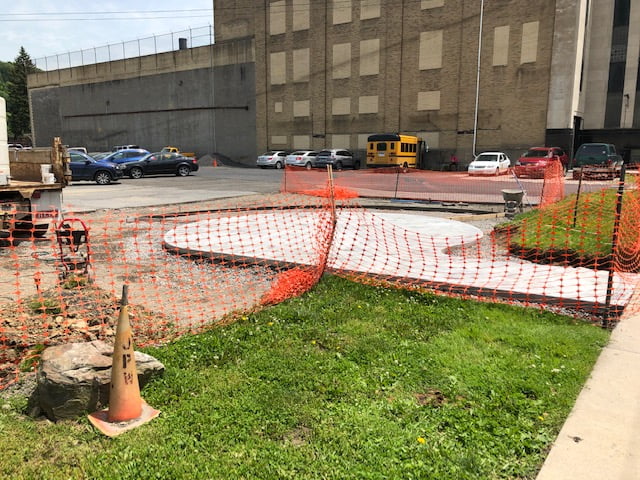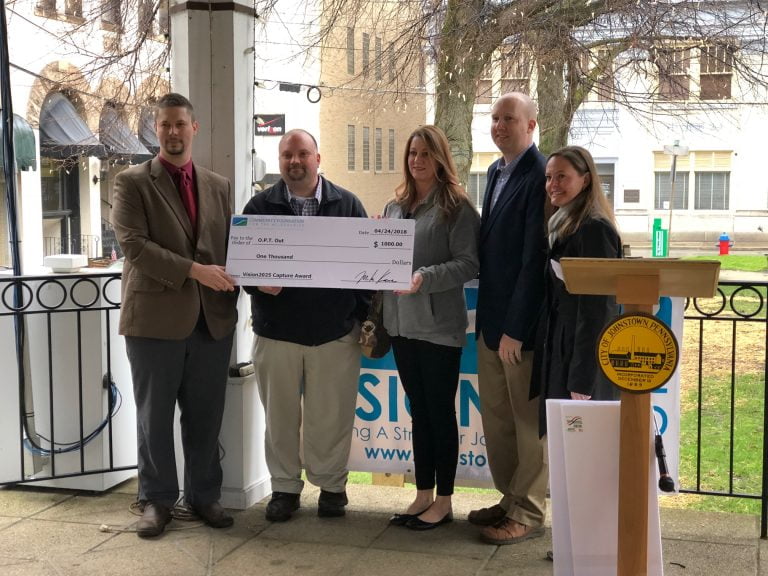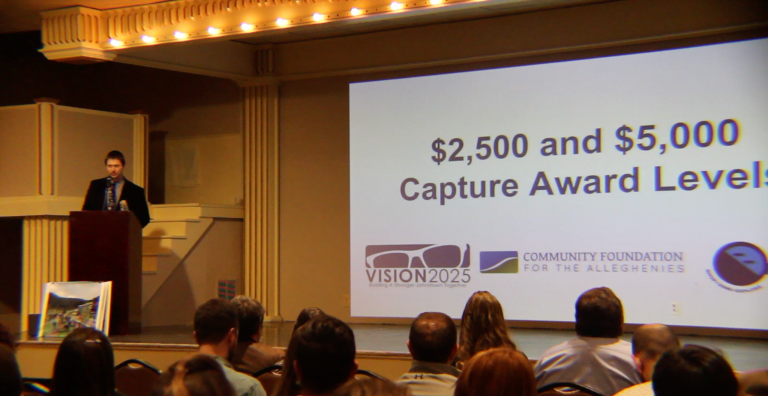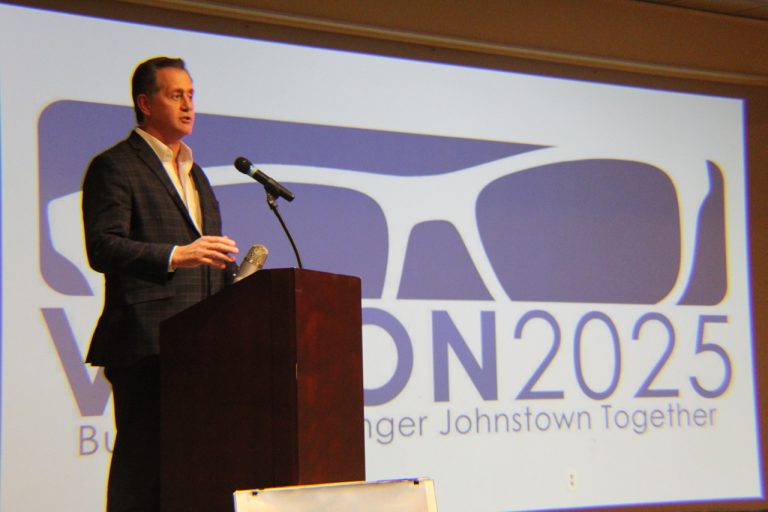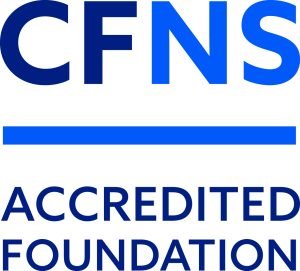If you grew up in Johnstown, chances are you remember tree-lined neighborhoods and green canopies covering downtown. In 1940, this is what you saw from atop the Inclined Plane, overlooking the city’s residential and commercial neighborhoods:
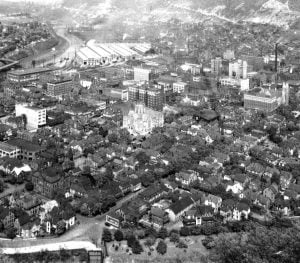
This is that same view today:

The side by side comparison reveals an undeniable reduction of greenspace.
A healthy and diverse urban forest improves the environment, strengthens the local economy, and appeals to a wide range of community members. Trees directly return important environmental and cost saving energy benefits to the surrounding community. These benefits include lower cooling and heating costs, slowing down the harmful effects of carbon in the atmosphere, reduced storm water runoff, stabilizing air quality, and increasing the living space available to wildlife.
Trees also create a pleasing aesthetic, which affects the way community members interact with each other. This raises property values, calms traffic, lowers crime rates, reduces hospital recovery times, and increases shopping and commerce.
Trees make life better.
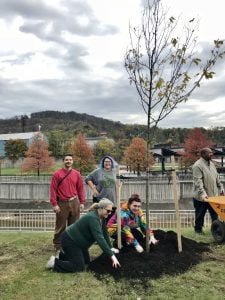 To bring back the green, the Western Pennsylvania Conservancy (WPC) teamed up with the Greenspace Capture Team from Johnstown’s Vision2025.
To bring back the green, the Western Pennsylvania Conservancy (WPC) teamed up with the Greenspace Capture Team from Johnstown’s Vision2025.
“In communities, street trees and greenspace are essential public investments which help to attract business and private investors,” says Vision2025 Coordinator Ryan Kieta. “A robust urban greenscape strategy supports local economic development and improves the quality of life for residents.”
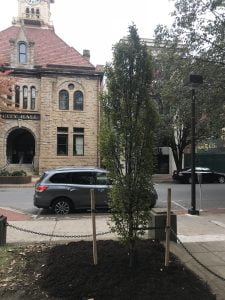 The Western Pennsylvania Conservancy is a nonprofit organization that began partnering with Vision2025 by planting 25 trees in Downtown Johnstown in 2017. Along with the new trees, the Conservancy also provided forestry, planning for planting events, and community education outreach and expertise. But first, the WPC did extensive research, with an inventory of every tree in the city and recommendations for what to plant, and where.
The Western Pennsylvania Conservancy is a nonprofit organization that began partnering with Vision2025 by planting 25 trees in Downtown Johnstown in 2017. Along with the new trees, the Conservancy also provided forestry, planning for planting events, and community education outreach and expertise. But first, the WPC did extensive research, with an inventory of every tree in the city and recommendations for what to plant, and where.
“The Conservancy is so pleased to again partner with this initiative and bring our community forestry work to Johnstown in 2018,” said Jeffrey Bergman, the director of community forestry and TreeVitalize Pittsburgh for the Conservancy. “The involvement of community residents and stakeholders is essential to the success of any planting project because people come to understand the value of the trees as a resource and how to care for them over time. This helps ensure that the trees thrive and provide the community with the many environmental, economic, and aesthetic benefits we seek through our work. The Johnstown community has embraced the Trees for Johnstown Project and the Conservancy is excited to continue this work over the next year.”
Johnstown’s Shade Tree Commission and Public Works Department are also heavily involved, along with the nonprofit Johnstown Shade Tree Association. Together, they’re putting together a master tree plan based on the WPA’s inventory.
The plan for the year ahead is to plant 50 more trees, reaching out into the city’s residential neighborhoods. Funding for the project – for research, planning, and the trees themselves – is provided by the Community Foundation for the Alleghenies through its Community Initiatives Fund.
“This city-wide undertaking requires lots of collaboration, among nonprofits, volunteers, and local government, and we’re proud that we can facilitate that,” said Mike Kane, Community Foundation President. “It’s clear that the benefits from recouping our greenspace are well worth the investment. It’s also great to see the community come together like this to support a project that will make Johnstown a nicer place to live, work, and enjoy.”
 It wouldn’t happen at all if not for the dozens of Greenspace Capture Team volunteers. These are the people who have gone through WPC training, put the trees in the ground, and take responsibility for their maintenance, under the supervision of the Tree Commission. Linda Messer spearheads the volunteers, as Greenspace Capture Team Leader.
It wouldn’t happen at all if not for the dozens of Greenspace Capture Team volunteers. These are the people who have gone through WPC training, put the trees in the ground, and take responsibility for their maintenance, under the supervision of the Tree Commission. Linda Messer spearheads the volunteers, as Greenspace Capture Team Leader.
“What is old is new again,” says Linda, who got involved with the Greenspace team because of her own passion for planting and green infrastructure. “Trees bring neighbors outside to enjoy sidewalk time, lifting their heads in friendship, communing with nature right in their front yards.”
The team went through a WPC Tree Tender course with Penn State Extension, for the training and all the tools they needed to plant and care for the trees they wanted to plant. This past November, an energetic crowd of over 40 residents spanning all age groups, planted street and park trees downtown. Linda expects that number to grow, as excitement builds around Vision2025.
It will build, too, as people start to enjoy the new trees.
Visit the city’s website to learn about street trees, see a list of approved species for your planting needs and likes, and download the required permit for tree work.
To find out about volunteering, or to start your own project, visit Vision2025’s website.



